
Tips on Maintaining Your Vehicle for Professional Drivers
Being a professional driver for one or more clients is a significant responsibility, especially if you’re using and maintaining a luxury vehicle. Since you’re the one who knows the car best, it’s essential to invest in its upkeep as much as possible and take action at the slightest sign of trouble.
You can be proactive in cleaning and maintenance to avoid problems and keep the car’s resale value as high as possible. Although many vehicle maintenance tips for regular drivers also apply to professional drivers, there are additional considerations when driving for others, especially if you transport passengers. Here are the top maintenance tips for chauffeurs, taxi drivers, delivery drivers, and others who rely on their car to make a living.
Use Proper Cleaning Supplies
Luxury vehicles often have leather or other sensitive fabrics on the interior, and even entry-level car models may have nice seats. Cleaning agents that aren’t specifically formulated for a surface can cause sticky residue or even damage to that surface.
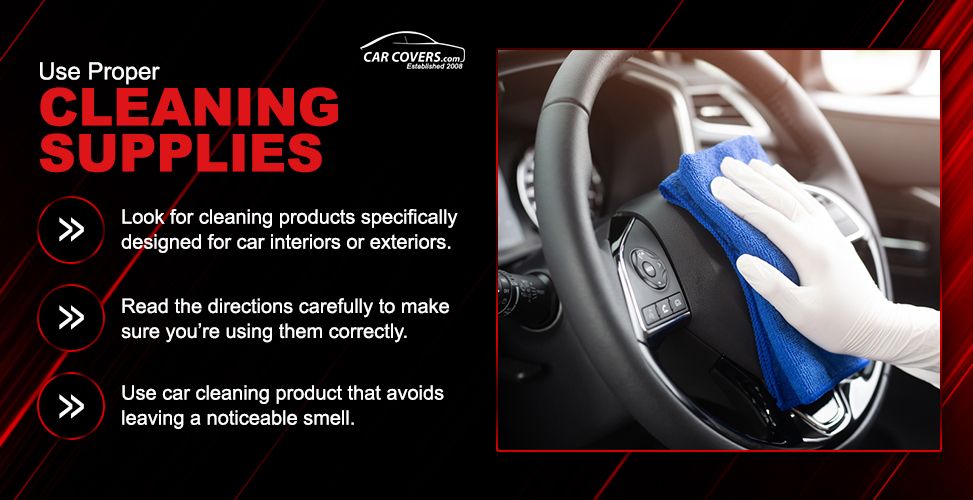
Look for cleaning products specifically designed for car interiors and read the directions carefully to make sure you’re using them correctly. Some require extra time to soak, while others can leave even more residue behind if you allow them to sit for too long. The same goes for exterior products, as some are only designed for paint, glass, or plastic.
Use a car cleaning product that avoids leaving a noticeable smell. Although having a new car smell is nice, it shouldn’t be too overpowering, or your passengers may complain. Read product reviews carefully before trying any new interior wipes or sprays and stick to a neutral scent when using deodorizers or air fresheners.
Shop Our Entire Selection of Car Covers
Get the Right Floor Mats
Basic car floor mats included with your car usually leave many gaps. They are typically easy to remove for cleaning but may require more frequent cleaning than all-over mats because of the gaps they leave. When dirt or crumbs get stuck in these gaps, it can attract bugs and even rodents. The threat of bugs and rodent damage is higher if you’re leaving the car unattended for long periods, but the possibility still exists with daily use.
All-over floor mats are a great option because they look good while providing maximum protection. You can get them fitted to your exact make and model and choose a color that matches the rest of your interior. Shake them out or vacuum them at least once a week—or more often if you have frequent passengers. Clean under the mats every two weeks or more frequently in the winter when passengers are tracking snow and slush into your car.
Clean the Handles and Cup Holders
Any surface of the car that your client may touch should receive a thorough wipe-down daily with a cleaning wipe labeled safe for that surface. Although this is partly for germ and sanitation concerns, it also helps prevent grime and dirt from building up.
This includes the exterior handles, which may be extra vulnerable to grime in the winter months when salt and slush fly up onto the car. Even if you’re usually the one opening the doors for clients, keep the handles cleanout of courtesy for any doormen or other service staff who may occasionally open them.
Cup holders and other compartments that aren’t touched as frequently should at least receive a visual check for any spots or spills once a day and be cleaned as needed. If they appear visually clean each day, give them a weekly cleaning along with the rest of the interior.

Wax and Polish
Exterior vehicle maintenance helps protect your car’s paint job from UV rays, scratches, and other wear-and-tear damage. Even if you’re only driving a car for deliveries and aren’t worried about appearances, proper exterior cleaning helps keep the resale value as high as possible. Car paint is very durable, but it’s still vulnerable to erosion from scratches and acidic debris like tree fruits and bird droppings.
Start by washing your car at least once every two weeks. If you’re a private chauffeur or serve high-end clients, you may need to wash it weekly. Since polishing and waxing should happen immediately after washing and drying, choose a day for cleaning when you have plenty of free time in your schedule.
Polishing removes a very thin layer of paint and moves it around to cover minor scratches and other imperfections in the paint. Not every part of your car needs polishing, so do a visual inspection of the car every time you wash it to identify small scratches. If you find a large scratch that is too deep or wide to cover with polish, take it in for professional repair as soon as possible.
Once the polished areas have dried, wax the entire car with liquid wax for the best results. Make sure to polish the headlights, windshield, and mirrors to make them easier to clean later. You can even wax your windows to help repel dust and keep them looking brand new.
Always Use a Car Cover
As with waxing and polishing, car covers are essential even if your car isn’t a high-end luxury model. You’ll want to protect its value and appearance as much as possible to maximize your investment.
A car cover provides optimal protection from UV rays, bird droppings, dirt, bugs, and other potential contaminants. Although you don’t have to use the car cover every single time you park the car outside, it’s wise to do so if you’ll be stopping for more than a few hours. This is especially true for luxury cars, but even the resale value of older and less-expensive cars can stay as high as possible with a good car cover.
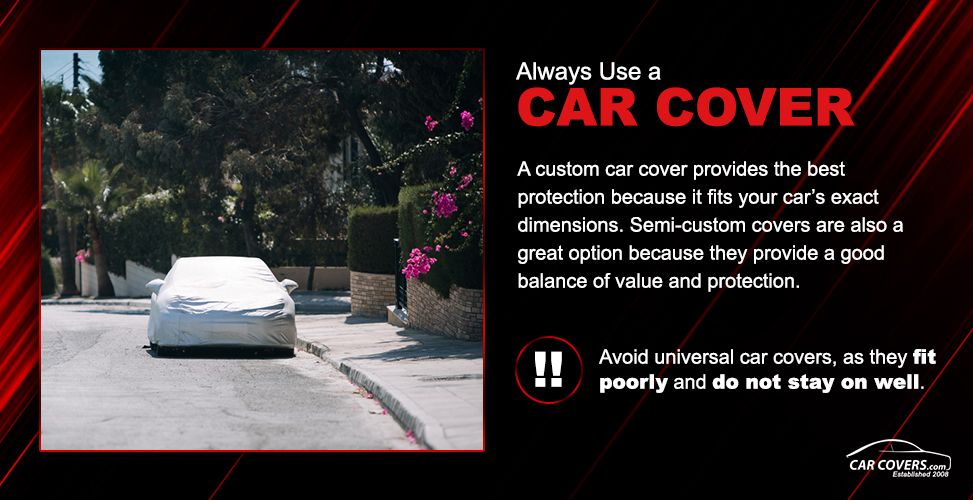
A custom car cover provides the best protection because it fits your car’s exact dimensions. Semi-custom covers are also a great option because they provide a good balance of value and protection. Avoid universal car covers, as they fit poorly and do not stay on well.
You might also need a locking cable to hold down your car cover if your area is subject to high winds. Even the best custom car covers don’t stay perfectly in place during severe weather, and a locking cable also provides additional protection against vandalism and theft. Fortunately, CarCovers.com includes locking cables with our Ultimate Shield and Platinum Shield covers so you can save money.
Car covers are most commonly used outdoors, but they are still important for indoor parking. A soft indoor cover helps prevent scratches and other accidental damage, especially if multiple people are using the garage. Some car covers are designed for indoor and outdoor use, but outdoor-only covers without soft lining on the inside are not optimal for inside storage and should be avoided for use inside closed garages.
Check the Fluids and Filters
Internal car parts might not have a direct impact on your passengers or clients, but they will affect your car’s long-term drivability and safety. Oil, antifreeze, and windshield wiper fluid are all easy to check and add on your own. Although you likely need professional help for full oil changes, you can handle adding a little more on your own. These fluids should be checked at least once a month and more frequently if you’re driving over 5,000 miles per month.
The engine air filter also needs periodic replacement. Most car manufacturers recommend replacing it once every 15,000-30,000 miles, but aim for closer to 15,000 or even 10,000 if your city has heavy smog or you drive on dusty rural roads.
Measure the Tire Treads
Even if you have excellent tires, their effectiveness eventually wears out. Most tire manufacturers claim their tires can last for a certain number of miles, but these claims may not hold up if you frequently drive on poorly maintained roads or deal with extreme temperatures.
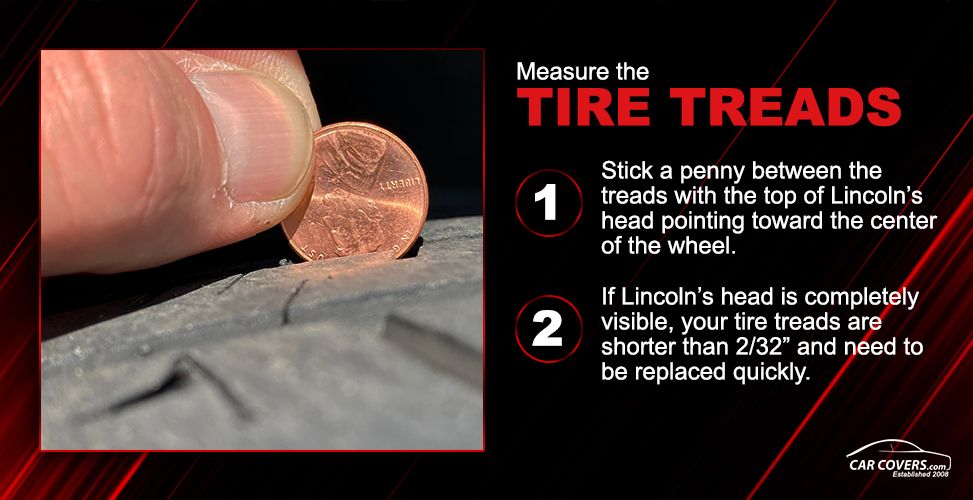
Instead of trying to replace your tires every set number of miles, measure the treads at least once a month. The easiest way to do so is to stick a penny between the treads with the top of Lincoln’s head pointing in toward the center of the wheel. If Lincoln’s head is completely visible, your tire treads are shorter than 2/32” and need to be replaced as soon as possible.
Your tires may still feel like they’re handling fine, but having enough tread on them makes an enormous difference in sudden rain or snow. Make tire care a priority to prevent serious accidents caused by hydroplaning or frozen roads.
Get More Frequent Tune-Ups
Although you can do a lot of basic car maintenance yourself, it always helps to have a professional look at the car periodically. A good mechanic can spot potential problems well before they become apparent. This can help prevent both unwanted engine noises and more tangible interruptions to your driving schedule.
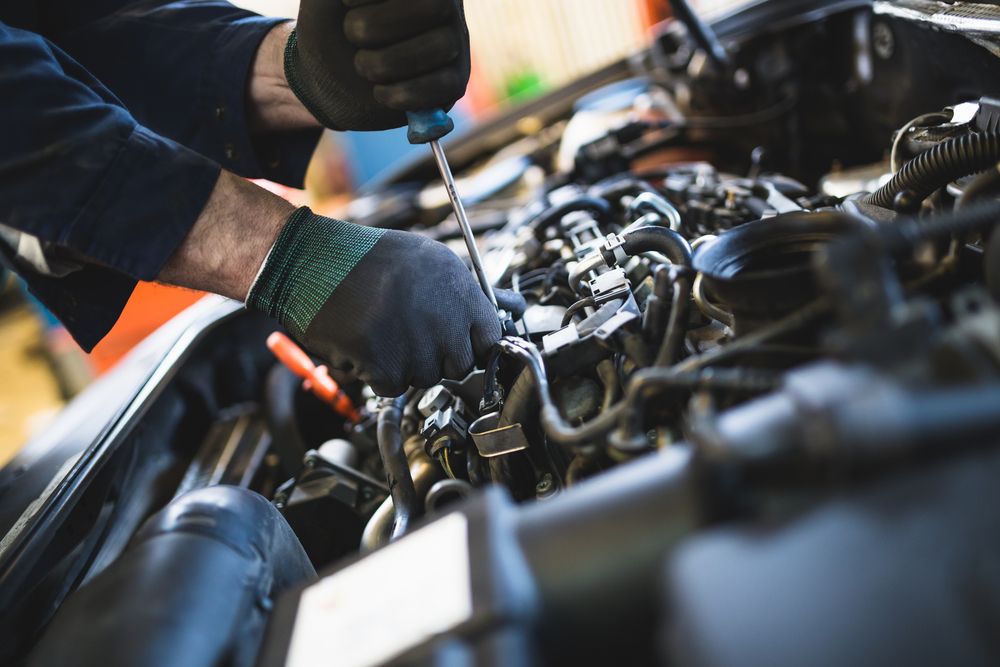
The standard best practice for cars is to get an oil change every 7,500-10,000 miles, which car maintenance technicians usually use as an opportunity to check for other problems. However, if you’re a driver who usually only does short trips at varying intervals, it may take a few months to reach that point.
Have a professional look at your car at least every two months, and make sure it’s the same person each time so they get to know your vehicle. Consider more frequent check-ups once your car is more than five years old. Since a lot of weather-related wear-and-tear can occur in a month, waiting for much longer can potentially cause serious problems to go unnoticed.
Your maintenance needs will be especially high if you are in stop-and-go traffic or do a lot of city driving. Take extra care to listen to your car’s needs and investigate any usual engine or brake sounds if you put your car through a lot of frequent starting and stopping.
Carry an Emergency Kit
Having a spare tire in the trunk isn’t the only essential for emergencies, so get a basic maintenance kit to keep in the trunk. Stash an extra phone charger and portable battery in the kit, as well, so you’re always prepared in case of an accident.
Your emergency kit should also contain cleaning supplies for handling any major messes that come up during the day. Your passengers are counting on you to provide a clean car no matter what, even if it means making time to clean between outings. Having a small bottle of cleaning spray, rags, paper towels, and even a small handheld vacuum cleaner in the trunk can make a huge difference to your passenger’s experience.
Shop Our Entire Selection of Car Covers
Communicate with Others
Customer service is essential when you’re a professional driver, and making sure your car is always ready to go on-time is the biggest priority. If any maintenance-related needs arise, it’s important to communicate this with your boss or client as soon as possible.
For example, schedule your car’s tune-up and monthly maintenance for the same day and time every month so your clients or bosses can plan accordingly. Although it’s wise to have an alternate car available or to even rent a car, this may not always be necessary with the right planning.
When negotiating your schedule and contract with your client or boss, discuss what-ifs regarding car availability and maintenance issues. Being up-front about who is responsible for providing an alternate car and realistic timelines for when a car is in for urgent repairs can help avoid misunderstandings later. You also don’t want to be pressured into driving a car with a check engine light on, so have a plan in place for acquiring an alternate car.
Making Your Mark as a Professional
Create a checklist for yourself and put reminders on your phone for weekly and monthly tasks. As you practice these good habits, you can adjust your schedule as needed to reflect the realities of your job.
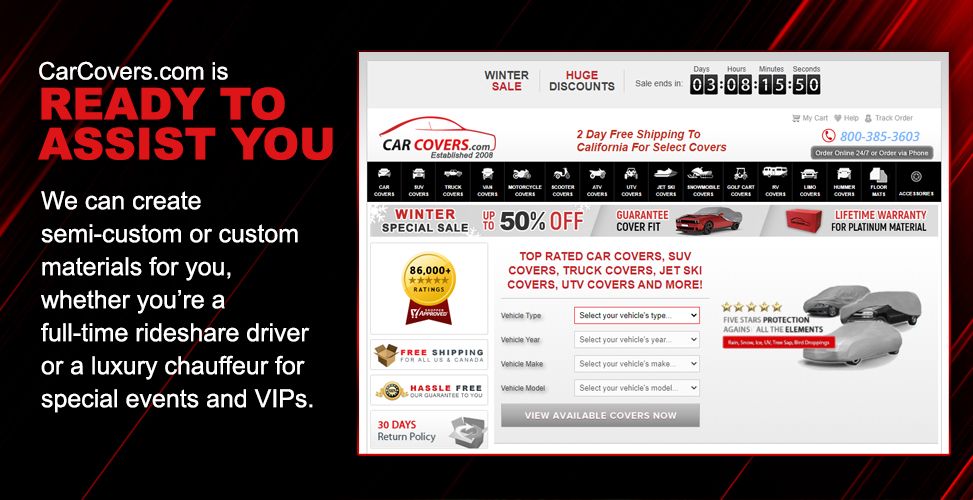
CarCovers.com is ready to assist you with indoor and outdoor custom car covers, floor mats, and other essentials for drivers of all types. We can create semi-custom or custom materials for you, whether you’re a full-time rideshare driver or a luxury chauffeur for special events and VIPs. Our site walks you through the customization and accessory options available for each cover. You can also send us a chat message or contact us at 1-800-385-3603 if you have questions.
Updated